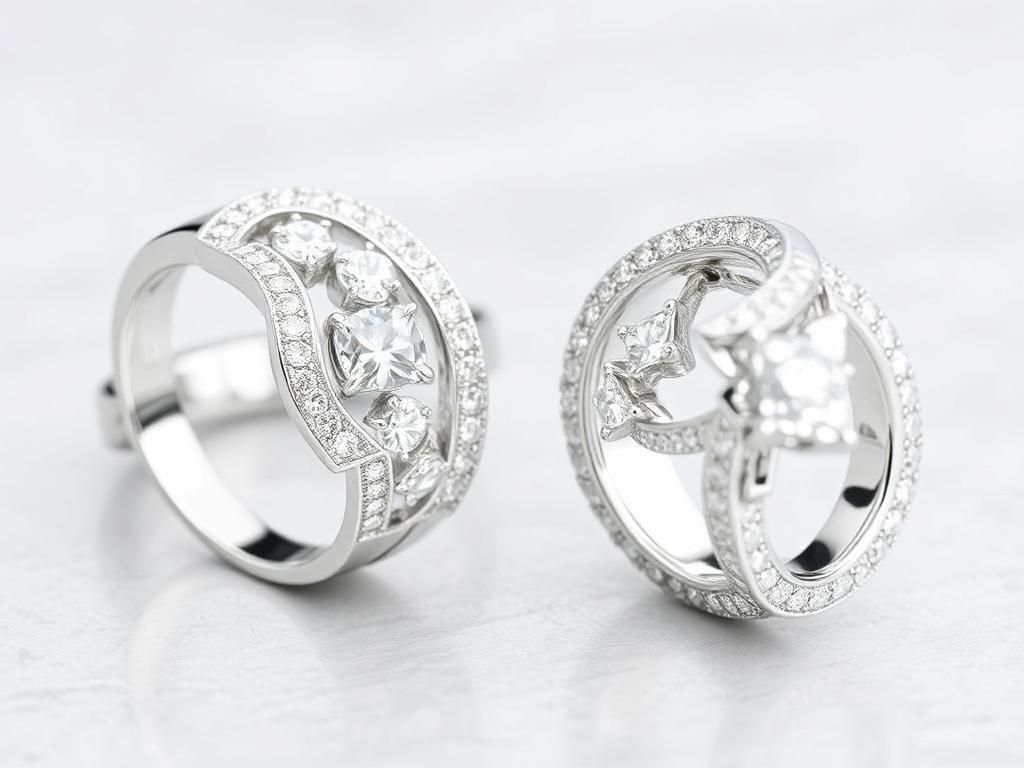Anklets are decorative ornaments traditionally worn around the ankle. Their significance transcends mere fashion: anklets serve deeper cultural and symbolic meanings across various societies. Understanding the anklet on the right ankle meaning provides valuable insight into personal expression, cultural beliefs, and historical contexts. This examination will not only delve into the historical and cultural significance of anklets but also explore the modern interpretations that enrich their symbolism today.
Historical Background of Anklets
Origin of Anklets
Anklets have a rich heritage that dates back thousands of years, with evidence of their use in ancient civilizations such as Egypt, India, and various regions of Africa. In ancient Egypt, anklets were often made of gold or colorful beads, representing wealth and social status. In India, they were traditionally worn by women as a symbol of marital status and fertility. Meanwhile, in cultures throughout Africa, anklets often conveyed specific meanings related to rites of passage or community belonging.
Across diverse cultures, the materials and designs varied significantly. Some were simple and made of leather, while others were intricate and adorned with precious stones. This diversity illustrates how anklets have historically been a representation of not only personal style but also social contexts.
Evolution Over Time
The historical perception of anklets has undergone dramatic shifts. Initially, they served practical purposes, from marking one’s status to denoting significant life milestones. Over time, their aesthetic appeal has grown, transitioning from utilitarian items to fashion accessories. In contemporary society, anklets symbolize freedom and individuality, often seen as an expression of personal style rather than strict adherence to traditional meanings.
Symbolism of Anklets
General Meanings Associated with Anklets
Anklets carry a myriad of meanings. They can symbolize love and commitment, reflecting deep personal relationships. They also represent freedom and independence, especially when worn in non-traditional ways. In some contexts, anklets convey status and elegance, particularly those adorned with precious materials or intricate designs. The phrase anklet on the right ankle meaning adds a layer of specificity, as the right ankle is often endowed with unique interpretations.
Right Ankle Specific Meanings
Cultural beliefs about wearing an anklet on the right ankle vary widely. In many cultures, the right side is associated with positive attributes such as femininity and sexuality. For example, in Hindu culture, anklets worn on the right ankle can symbolize a woman’s marital status and can be thought to attract good fortune. In contrast, some Western interpretations may connect right ankle anklets to a sense of sexual freedom.
These nuanced meanings illustrate the importance of understanding the context behind wearing anklets, as different cultures attribute various significance to the right ankle.
Cultural Insights
Anklets in Different Cultures
Anklets hold profound significance in numerous cultures around the world. In Hindu traditions, for instance, anklets are often crafted with bells and are worn by married women as a sign of their marital status and to ward off evil spirits. In African traditions, anklets serve as adornments during rituals and celebrations, often carrying implications related to identity and status.
The Western perspective often views anklets in a more fashion-centric light, focusing on each individual’s self-expression rather than cultural implications. As such, the resurgence of anklets in contemporary fashion has also reflected these changing dynamics.
Specific Traditions and Their Meanings
Numerous stories and folklore highlight the significance of wearing an anklet on the right ankle. For example, in some Indian households, it is customary for brides to wear specific anklets that signify purity and devotion. In parts of Africa, women may wear unique anklets that signify their status within the community, influencing their roles and responsibilities. Such cultural tales help underscore that the anklet on the right ankle meaning is interwoven with broader narratives that have historical, social, and cultural dimensions.
Fashion and Personal Expression
Modern Fashion Trends
Current fashion trends have transformed the anklet into a ubiquitous accessory. Styles often vary, with materials ranging from metals like silver and gold to fabric and beads. The evolution of anklets in modern aesthetics allows individuals to freely express their personality through the choice of design, material, or placement—such as opting to wear an anklet on the right ankle for personal significance.
Fashion influencers play a significant role in these trends, showcasing how an anklet can complement outfits, often highlighting the symbolism behind specific placements on the body. Wearing an anklet on the right ankle may be a choice rooted in deeper personal or cultural meanings, paralleling the belief that the right side is imbued with certain attributes.
Personal Meaning and Expression
For many, the decision to wear an anklet on the right ankle is deeply personal. Testimonials from individuals often reveal that it represents love, freedom, or independence. There are stories of women who wear anklets as a connection to their heritage, while others view them as a simple fashion choice with personal significance.
These expressions link the anklet on the right ankle meaning to milestones in life. Each anklet comes with a story, enriching the personal narrative and societal connections that wearers foster through this unique form of adornment.
How to Choose the Right Anklet
Factors to Consider
Selecting an anklet involves careful consideration. Material preferences can play a significant role, with options ranging from metals to fabric or beads. Beyond aesthetics, consider the durability and comfort of materials. Choose designs that resonate personally, whether through color, symbolism, or craftsmanship.
Your choice of an anklet can also reflect personal beliefs or life stages. Customarily, right ankle anklets may be chosen for symbolic reasons, aligning with the meanings explored throughout this article.
Sizing and Fit
When choosing an anklet, proper sizing is essential. Measure your ankle circumference to ensure a comfortable fit. A well-fitting anklet should not be too tight or restrictive, nor should it be so loose that it slips off.
To assist with sizing, consider the following guidelines:
| Size Category | Measurement (Inches) |
|---|---|
| Small | 8 – 9 inches |
| Medium | 9 – 10 inches |
| Large | 10 – 11 inches |
Conclusion
In summary, the anklet on the right ankle meaning resonates across various cultural, historical, and personal contexts. Understanding these layers—the historical significance, cultural beliefs, and modern interpretations—provides a nuanced view of what it means to adorn an anklet. Whether chosen for symbolism, personal expression, or fashion, the right ankle offers unique meaning, inviting wearers to connect with the rich legacy of this age-old ornament.
FAQs
1. What does it mean when someone wears an anklet on their right ankle?
Many cultures associate the right ankle with femininity, sexuality, and positive attributes.
2. Are anklets only for women?
No, anklets can be worn by anyone, regardless of gender. They serve personal and cultural significance.
3. What materials are commonly used in anklets?
Common materials include metal (silver, gold), fabric, beads, and leather, depending on personal preferences.
4. How do I properly size an anklet?
Measure your ankle’s circumference and refer to sizing guidelines to find the right fit.
5. Can anklets be worn for religious reasons?
Yes, in some cultures, anklets are worn for religious or ceremonial purposes, carrying deep personal significance.
6. What are modern trends in anklet fashion?
Trends include layering multiple anklets, choosing unique designs, and using mixed materials for a bohemian look.
7. How can I clean my anklet?
Cleaning methods vary based on materials; generally, mild soap and water or specialized cleaners work best.

8. Is it acceptable to wear an anklet to formal events?
Yes, anklets can complement formal wear, especially when selected carefully and matching the outfit.
9. Why are anklets sometimes worn with bells?
In Hindu culture, bells on anklets signify a married status and are also believed to ward off evil spirits.
10. What is the significance of anklets in African cultures?
In various African cultures, anklets represent status, identity, and are often worn during rituals and celebrations.


